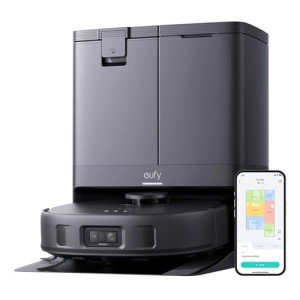The Rise of Self-Emptying Robot Vacuum Cleaners: A Game-Changer in Smart Home Cleaning
Recently, robot vacuum cleaners have gone from being a futuristic luxury to a daily household important, alleviating the lives of millions by taking over one of the most ordinary tasks-- vacuuming. These autonomous gadgets browse homes with precision, getting dust, dirt, and particles with minimal human intervention. Nevertheless, one considerable limitation stayed: by hand emptying the dustbin after almost every cleaning session.
Go into the game-changing development: self-emptying robot vacuum. These advanced cleaning makers not only vacuum your floors but also empty their dustbins instantly into a bigger bin or base station, making them even more convenient and effective. Let's check out how these marvels of modern-day innovation work, their advantages, and why they're ending up being significantly popular in homes all over the world.
How Do Self-Emptying Robot Vacuums Work?
Self-emptying robot vacuums run much like traditional robot vacuum cleaners, using sensing units and algorithms to browse your home, avoiding challenges and cleaning numerous surface areas. However, their standout feature is their ability to empty the contents of their integrated dustbin into a different docking station, generally called a "self-emptying base" or "cleaning base." This base station is geared up with a bigger disposable bag or washable dustbin that can hold weeks' worth of dirt and debris, eliminating the requirement for frequent manual emptying.
When the robot vacuum finishes a cleaning cycle or senses that its onboard dustbin is complete, it returns to the base station. At the dock, powerful suction within the base efficiently moves the debris from the vacuum's dustbin into the bigger container. Once cleared, the robot is ready for its next cleaning session.
Benefits of Self-Emptying Robot Vacuum Cleaners
Increased Convenience
With standard robot vacuums, you 'd have to empty the dustbin after every one or more cleaning sessions, particularly if you have a larger home or family pets that shed heavily. Self-emptying models solve this issue by immediately transferring the debris, reducing the frequency of your participation.
www.robotvacuummops.uk emptying a vacuum bin can launch dust and allergens back into the air. Self-emptying systems are created to decrease this exposure, often using sealed bags with HEPA filters to trap particles efficiently, making them an excellent choice for allergic reaction sufferers.
Time-Saving
For hectic households, the self-emptying feature indicates you can go weeks without thinking about your vacuum cleaner. It's the supreme "set it and forget it" service for keeping clean floors.
Pet-Friendly Solution
For pet owners, who often handle fur, dander, and occasional mishaps, self-emptying vacuums are a lifesaver. They can handle the additional particles generated by family pets without needing continuous upkeep.
Suitable for Larger Homes
Larger spaces produce more dirt and dust. A robot vacuum with a self-emptying feature can clean numerous rooms more efficiently since it does not require to stop mid-cycle for manual dustbin emptying.
Popular Models on the Market

Numerous producers have actually introduced self-emptying robot vacuums, each offering distinct functions and advantages. Here are a few notable choices:
iRobot Roomba i7+ and s9+.
The leaders of self-emptying innovation, iRobot's designs include the "Clean Base" dock, which can hold up to 30 days of dirt and utilizes allergen-lock bags to trap dust effectively.
Shark IQ Robot Self-Empty XL.
Shark's self-emptying vacuum offers a bagless base station, making it a more environmentally friendly alternative for those who choose to avoid disposable bags.
Roborock S7 MaxV Ultra.
Understood for its sophisticated mopping and vacuuming capabilities, Roborock's self-emptying models consist of a versatile dock that can handle vacuum dustbins and water tanks for its mopping function.
Ecovacs Deebot X1 Omni.
For a real all-in-one service, the Deebot X1 Omni not only self-empties but also cleans and dries its mopping pads for totally hands-free upkeep.
Things to Consider Before Buying.
While self-emptying robot vacuums use unbelievable benefit, they include a few considerations:.
Price.
These models are more pricey than standard robot vacuums, so examine your budget plan and requires before making the financial investment.
Upkeep.
Although the base station lowers your participation, you'll still require to change the bags (or clean the washable bin) and keep the robot and base to make sure ideal efficiency.
Space Requirements.
The self-emptying base station is bulkier than traditional charging docks, so you'll require to set aside suitable area in your house.
Compatibility.
Inspect whether the vacuum's app and functions are compatible with your wise home environment, such as Alexa, Google Assistant, or Apple HomeKit, for seamless combination.
The Future of Cleaning.
The introduction of self-emptying robot vacuum cleaners represents a substantial leap forward in home automation. As technology continues to evolve, we can anticipate a lot more sophisticated functions, such as self-cleaning rollers, enhanced AI navigation, and better combination with other wise home gadgets. These vacuums are laying the foundation for a fully autonomous cleaning experience, allowing property owners to recover even more of their time.
In conclusion, self-emptying robot vacuums are not just gadgets-- they're services created to make our lives much easier and our homes cleaner. As they become more accessible and affordable, it's safe to state they represent the future of smart, effective cleaning for families everywhere. Whether you're a tech lover, a hectic professional, or a pet owner, this development might just be the upgrade your home requirements.
